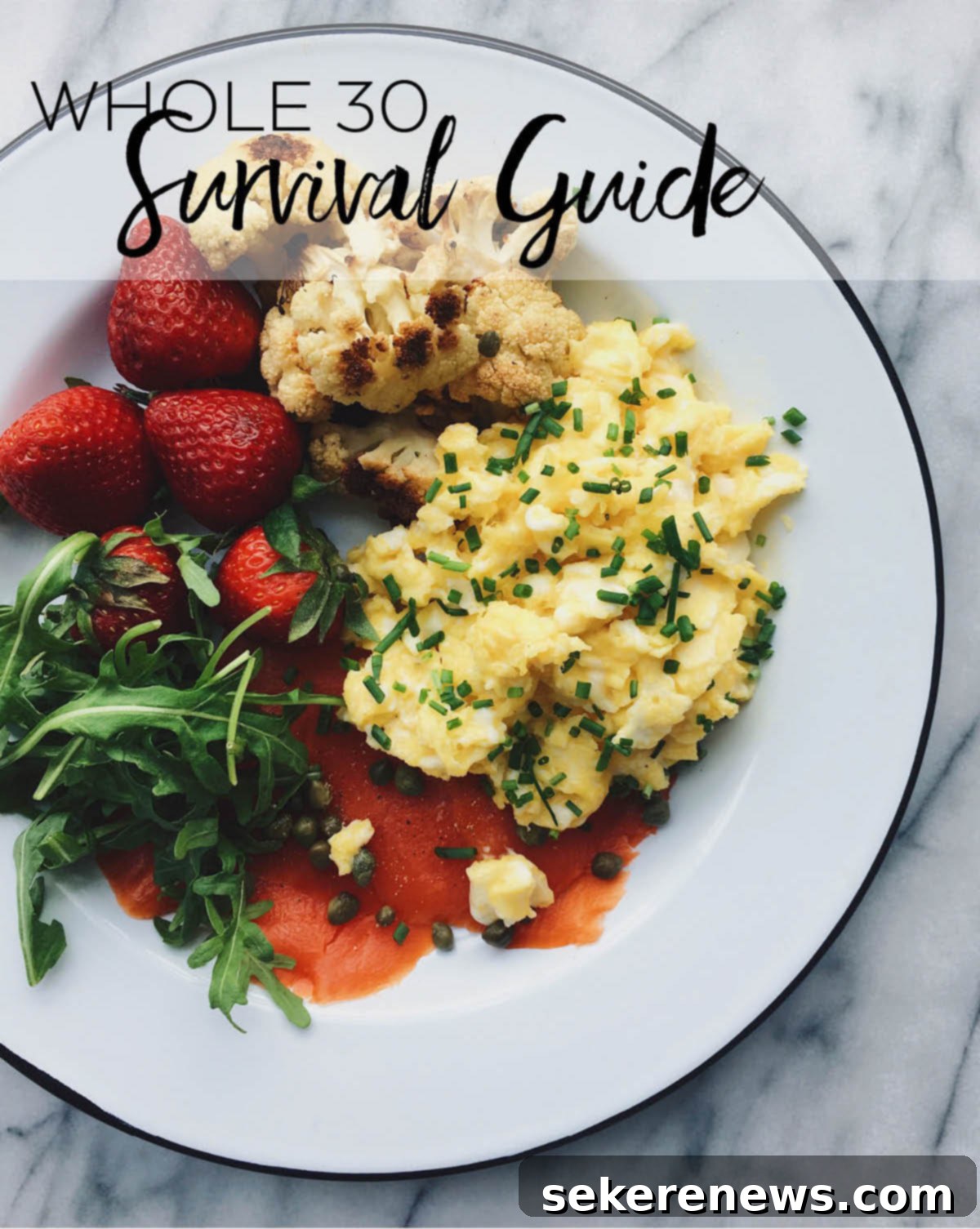Mastering Your Whole30 Journey: A Comprehensive Survival Guide and Personal Experience
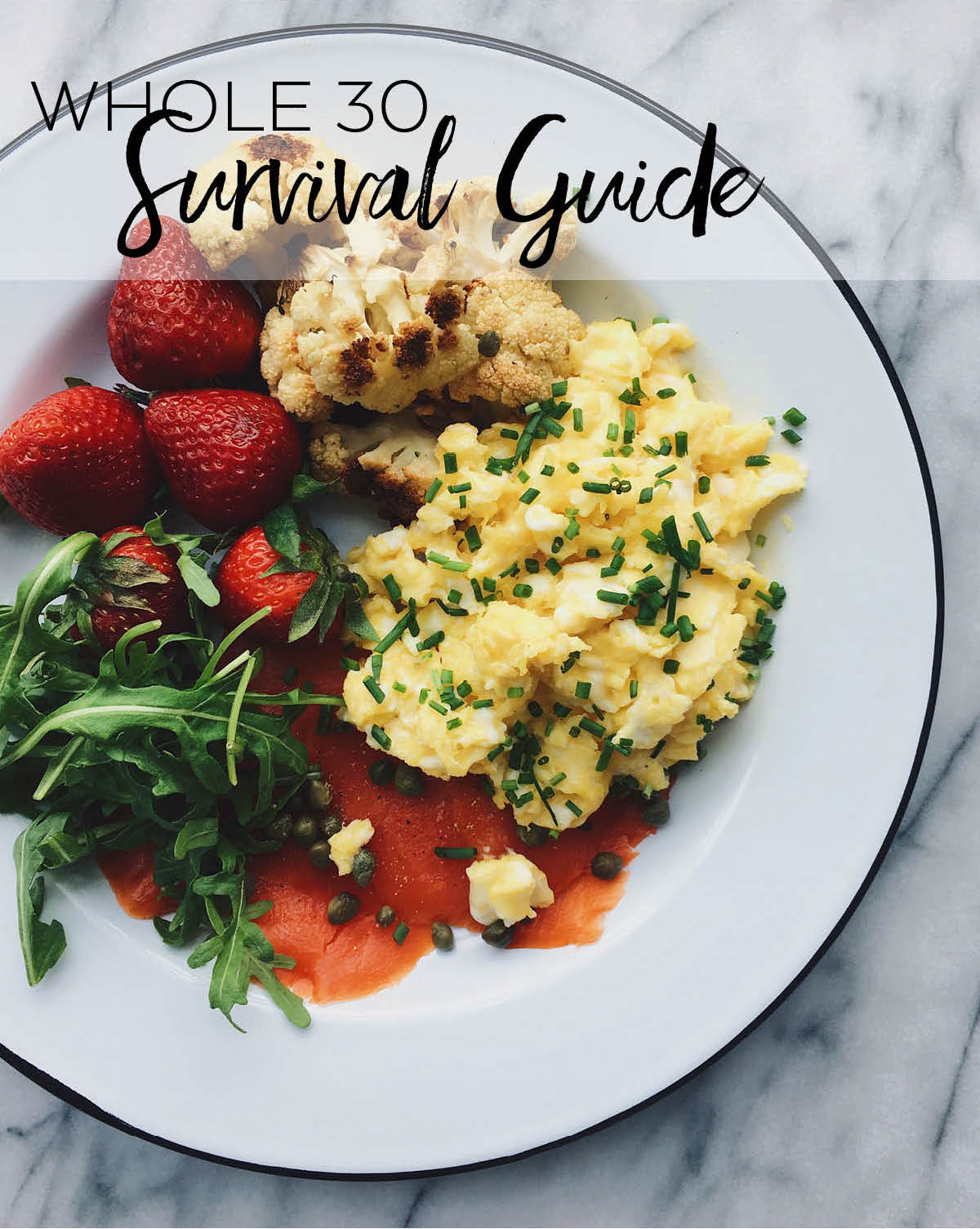
Today marks my fourth full day on Whole30, and what an interesting few days it has been! A few weeks ago, I announced that I would be embarking on the Whole30 challenge for the next month. At the time, I didn’t delve deeply into the *why’s* or *how’s* behind my decision. However, the outpouring of interest and questions from many of you, combined with my personal desire for accountability, prompted me to share more of my journey and insights in this post.
To be completely honest, I’m usually the first to cast a skeptical eye on popular food programs or restrictive diets. I consider myself an extremely analytical person and firmly believe in understanding the rationale behind eliminating major food groups. If you have a legitimate health intolerance or allergy, that’s a different discussion entirely. Every individual’s body is unique, and it’s crucial to listen to your own needs. Never let anyone make you feel bad about your dietary choices. This post is not about prescribing a diet; it’s simply about sharing my personal experience and thought process, especially since so many of you expressed curiosity.
In my view, food offers so much more than just health benefits and essential nutrients. Food is deeply emotional; it’s tied to comfort, celebration, and pure enjoyment. Certain foods simply taste incredibly good and add immense pleasure to life. I adore dairy, pasta, bread, and grains. And yes, I certainly enjoy baked goods from time to time. As someone whose work revolves around food, my initial reaction to the concept of Whole30 was, understandably, one of shock: “You can’t eat *what*?!”
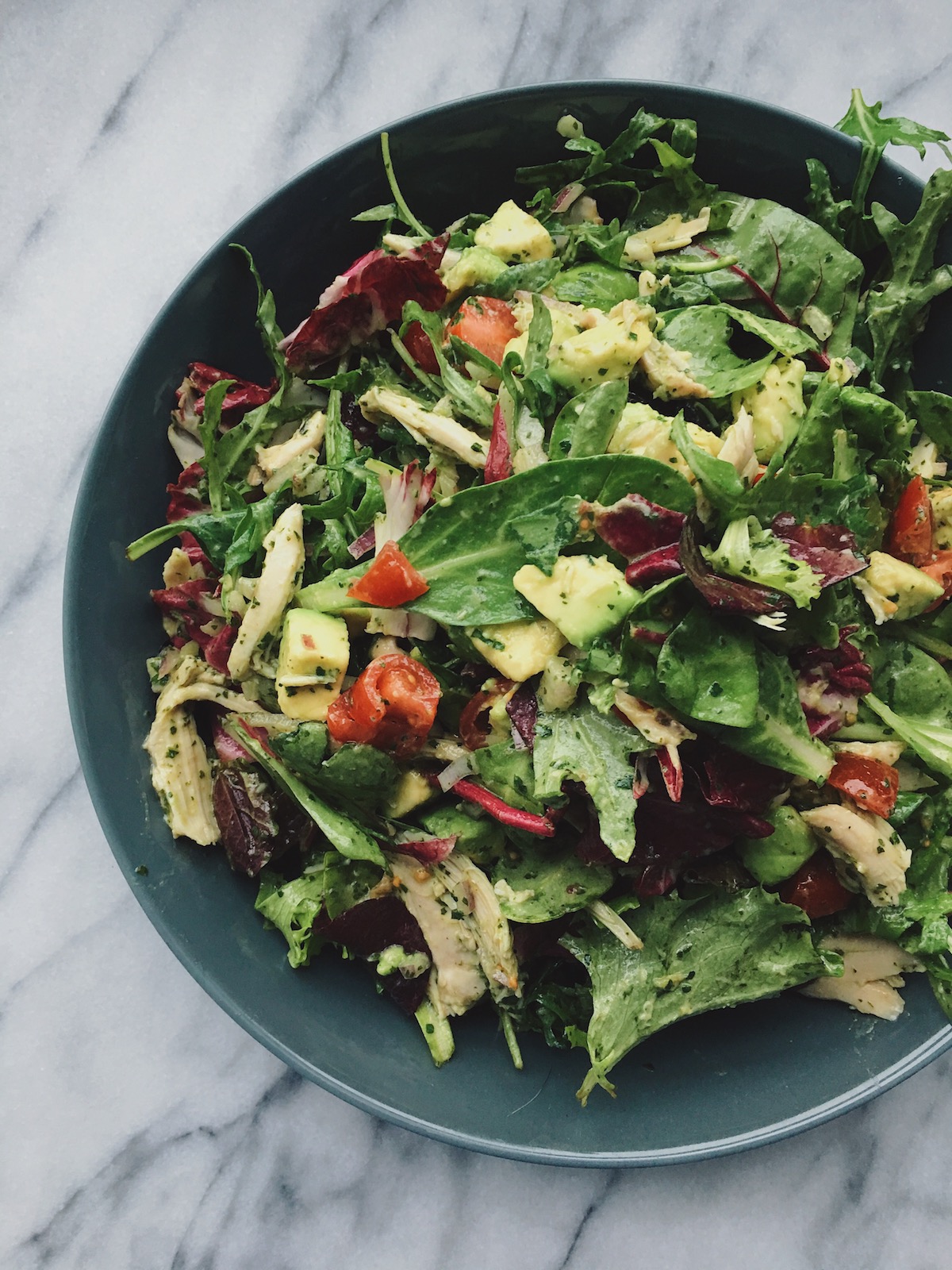
Despite my initial reservations, I kept hearing more and more positive feedback about Whole30. This prompted me to purchase and read the foundational book, It Starts with Food. And to my surprise, once I delved into it, I found myself genuinely wanting to try the program! The book’s philosophy was incredibly fascinating, particularly its insights into cravings and the concept of “foods-with-no-brakes” – those items you just can’t seem to stop eating once you start. These aspects resonated deeply with my own experiences.
I have always been curious about how different foods impact my body and mind, but I’ve never truly *known* until now. The truth is, you can’t genuinely understand these effects until you eliminate certain foods and then mindfully reintroduce them. While I embrace vegetables, fruits, and many other traditionally healthy foods, and consider myself fairly conscious of my food choices, I undeniably have several “foods-with-no-brakes.” For me, these are unequivocally pasta, bread, and grains.
I love them, and I crave them – a lot, perhaps a little too much. Over the past few years, I’ve definitely picked up some less-than-ideal eating habits, and my metabolism isn’t quite what it once was. This reliance on comforting, familiar foods has also, regrettably, made me less creative and more complacent in the kitchen. It’s a cycle I’m keen to break.
I’ve always been aware of my susceptibility to certain foods, but I often pushed these thoughts aside for the immediate satisfaction of eating them. I would frequently grab a second or third helping simply because it tasted good, not because my stomach was truly hungry. To be honest, I believe most people have these types of foods in their lives! The intention behind Whole30 for me isn’t about eliminating these foods from my life forever (I truly have no plans of doing that!), but rather about gaining a deeper understanding of my relationship with them.
That is the core reason I’m trying Whole30. It’s an opportunity to reset old habits, get back on track with more mindful eating, become intimately aware of my food choices – both the emotional triggers behind them and how different foods affect my energy levels, body, and mood – and ultimately leverage this experience to become more creative and innovative with my everyday meals. I wanted to share this process with all of you to demonstrate that it is entirely possible to eat truly delicious, exciting, and satisfying food that meticulously meets all of the Whole30 program requirements.
So far, the key to success has been to focus intently on all the nourishing foods that *are* allowed, rather than dwelling on the few that are not. Just four days in, I’m already significantly more conscious about filling my breakfast and lunch plates with healthy fats (like avocado, olive oil, and ghee), ample protein, and a vibrant array of vegetables. This shift alone has been transformative.
Proactive meal preparation has become my secret weapon. I’m consistently stocking my fridge with easy-to-grab Whole30-compliant choices such as leftover roast chicken, hard-boiled eggs, and pre-sliced vegetables. This foresight makes it incredibly simple to make nutritious, thoughtful choices throughout the day, even when time is tight. The best part? These carefully chosen foods are exceptionally satiating. *Way* more filling and satisfying than some of my former go-to breakfasts or lunches, which often left me reaching for snacks soon after.
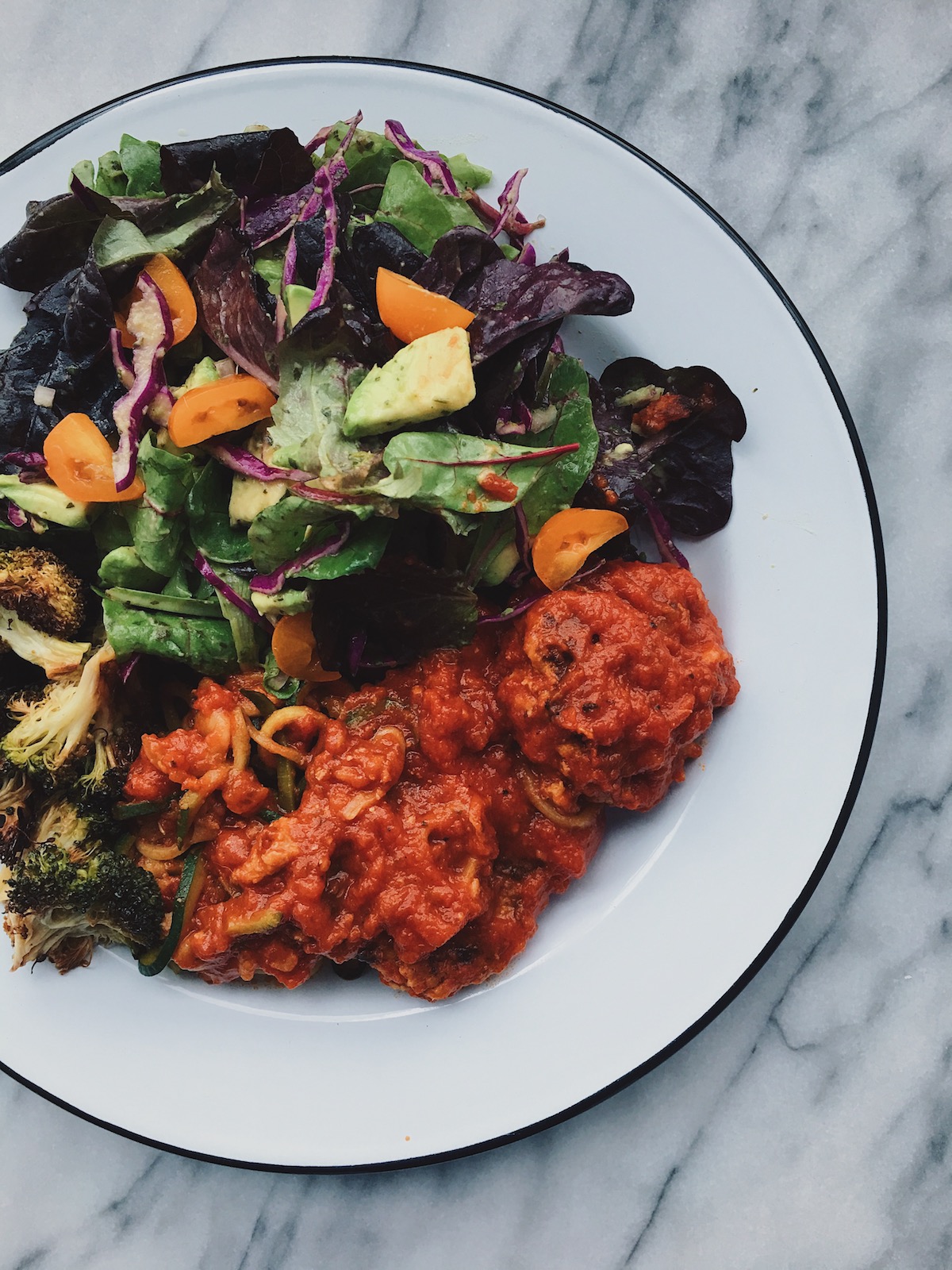
Understanding the Whole30 Rules: What’s In and What’s Out
The Whole30 program is quite clear about its dietary guidelines, which is a major strength. Here’s a quick overview:
- Foods excluded from Whole30: Grains (including corn and rice), legumes (this includes peanuts and most beans), soy (all forms), sugar (both added and natural sweeteners like maple syrup, honey, agave, stevia, etc.), and dairy (with the notable exception of ghee or clarified butter, which has had the milk solids removed). Alcohol is also strictly off-limits.
- Foods allowed on Whole30: An abundance of vegetables (including potatoes!), fruits (in moderation), seafood, eggs, quality meats and poultry, and tree nuts (excluding peanuts, which are legumes). Healthy fats like olive oil, coconut oil, and avocado oil are also encouraged.
My Honest Take: Likes and Dislikes About the Program
Things I Like About the Whole30 Program:
- Clarity and Simplicity: The rules are refreshingly clear and easy to follow, leaving little room for ambiguity. This reduces decision fatigue significantly.
- Fosters Culinary Creativity: It genuinely forces you to branch out and become more inventive in the kitchen. To avoid boredom, you’ll inevitably find yourself experimenting with a wider variety of vegetables, fruits, seafood, and meats. This push for creativity has already made my meals more exciting.
- Heightened Awareness: I’ve always been an avid label reader, but Whole30 elevates this awareness to a new level. It makes you incredibly conscious of what’s actually in your food. You’ll quickly discover how many everyday pantry items contain added sugar or other non-compliant ingredients – even things you wouldn’t expect.
- Mandatory Meal Planning: If you’re terrible at meal planning, Whole30 will compel you to become a pro. Success on this program absolutely hinges on thorough meal planning and food preparation. It’s a habit that pays dividends far beyond the 30 days.
Things I Don’t Like About the Whole30 Program:
- Reliance on Meat/Seafood: To create truly satiating meals without grains or legumes, you often have to rely heavily on meat or seafood. While I do eat meat, I’m not accustomed to this quantity. Interestingly, I’m starting to feel that my body might prefer more protein, as I feel much more satisfied after these meals.
- Limited Sustainable Plant-Based Options: While I appreciate the program’s strong encouragement for high-quality, grass-fed, or pastured meats, I do feel it overlooks a lot of sustainable, nutrient-dense plant-based protein options like legumes and certain grains. However, it’s important to remember it’s only a 30-day reset.
- Breakfast Monotony: Without grains or dairy, traditional breakfast options become severely limited. You will get tired of eggs. I’m already bored of eggs! I truly miss yogurt. Thankfully, I don’t mind eating “non-breakfast-y” things for breakfast, but ask me this question again in 20 days.
- Social Challenges: It’s incredibly difficult to fully enjoy normal social gatherings that revolve around food. I don’t really anticipate eating out at all in the next month. Going to restaurants or traveling requires extensive planning and forethought. Our upcoming trip to New York City this weekend is already proving to be a logistical puzzle.
How I’m Feeling: Early Observations and Unexpected Benefits
Overall, I’m feeling good! Not overwhelmingly different in a dramatic way, but I notice subtle, positive shifts. I’m consistently feeling very satiated after every meal and haven’t felt the need to snack in between, which is quite unusual for me. Typically, I’d reach for some fruit or a small snack to tide me over from lunch to dinner. Technically, snacking is discouraged on the program, and I’ve found myself doing very little of it naturally.
Beyond satiety, I’m going to bed earlier, feel noticeably less bloated, and wake up feeling more genuinely hungry in the morning – which I interpret as a good sign of my digestive system resetting. Importantly, I haven’t experienced any of the dreaded afternoon slumps or “hangry-ness” that used to plague me. This newfound stable energy is a significant benefit.
Interestingly, I haven’t experienced any massive sugar cravings, which is a common struggle for many people in the first three to five days of Whole30. However, I wasn’t anticipating the no-sugar rule to be the hardest part for me, as I’ve always gravitated towards savory foods over sweet ones. I tend to be an “out of sight, out of mind” person. If I have a loaf of banana bread or cake sitting on my countertop, I will undoubtedly eat some of it. No question. But if those types of things aren’t readily available in my kitchen (which is my preference), I can go for a pretty long time without them.
What I *do* miss are grains – specifically my sprouted bread, English muffins, and pasta. But I miss them less for their taste alone, and more for the variety and comforting texture they add to meals. The most noticeable craving – if I can even call it that – is definitely dairy. I miss milk and cheese a lot! Mostly for the unique flavor and creaminess they impart. My morning coffee, in particular, is simply not the same without a splash of real milk or cream. There truly is no compliant substitute that fully replicates it.
I can already tell that I’ll need to continuously mix up my meals and recipes in the coming weeks to avoid succumbing to food boredom. That’s a challenge I’m ready to tackle!
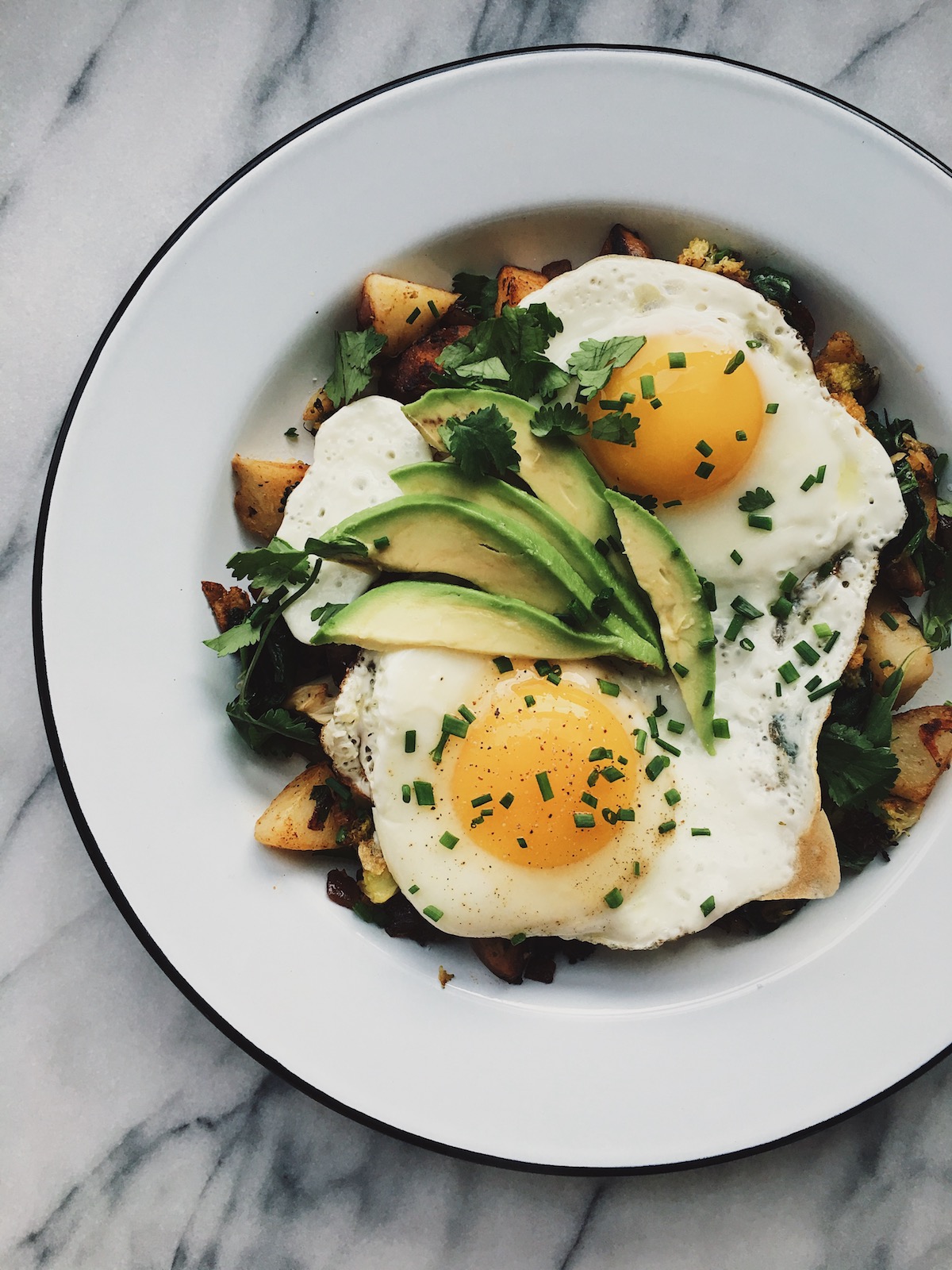
Essential Whole30 Compliant Recipes and Resources
Since many of you mentioned starting Whole30 with me, or are considering it, I wanted to share a handful of recipes from my blog that are either already Whole30 compliant or require just a few small, simple tweaks to meet the program’s guidelines. These are perfect starting points for building your Whole30 menu.
For more behind-the-scenes glimpses into my Whole30 journey, including my never-ending search for the best non-dairy coffee substitute, be sure to follow me on Instagram and Instagram story videos!
WHOLE30 COMPLIANT RECIPES + RESOURCES:
Cooking Resources & Staples:
Mastering these foundational recipes will make your Whole30 experience much smoother and more flavorful.
- Ghee vs. Clarified Butter (and how to easily make both at home! Ghee is Whole30 compliant, adding a rich, buttery flavor.)
- Green Chile Adobo Sauce (This versatile sauce can elevate almost any meal – put this on everything from eggs to roasted chicken!)
- Homemade Garlic Confit (Infused garlic oil and tender garlic cloves are fantastic for cooking and adding depth of flavor.)
Wholesome Breakfasts:
Break free from egg monotony with these hearty and delicious breakfast ideas. Remember to check for compliant modifications!
- Mexican Hash Brown Stack (Substitute oil with liquid ghee to keep it compliant for a flavorful start.)
- Breakfast Hash (Omit any non-compliant oils; substitute with ghee and ensure you use a Whole30-compliant sausage.)
Comforting Soups & Stews:
Perfect for meal prepping and enjoying warm, nourishing meals throughout the week.
- Roasted Cauliflower Soup (Naturally creamy and satisfying.)
- Garam Masala Carrot Soup (Aromatic and vibrant, a great way to enjoy vegetables.)
- Butternut Squash and Leek Soup (Substitute butter with ghee; completely omit the crème fraîche.)
- Creamy Tomato and Avocado Gazpacho (A refreshing and vibrant option, perfect for a light lunch.)
- Authentic Mexican Tortilla Soup (Omit the cheese and, of course, the tortilla chips. Add extra avocado for richness!)
- Roasted Acorn Squash and Sweet Potato Soup (Naturally sweet and comforting.)
- Slow Cooker Winter Vegetable Soup (Omit the lentils and cheese; enhance with compliant chicken or homemade mini meatballs for protein.)
Fresh & Flavorful Salads:
Salads don’t have to be boring on Whole30! Load them up with protein and healthy fats for a fulfilling meal.
- Guacamole Greens Salad (A fantastic, vibrant salad – just remember to omit the tortilla chips.)
- Radicchio, Pear, Pomegranate, and Walnut Salad (Omit the gorgonzola cheese; consider adding some roasted chicken or compliant protein for a complete meal.)
Satisfying Main Courses:
Discover how to create rich, flavorful, and compliant dinners that will keep you excited about your Whole30 journey.
- Za’atar Grilled Chicken Bowls (Omit the bulgur; substitute with cauliflower rice, a large bed of salad greens, or roasted vegetables for a compliant meal.)
- Seared Salmon with Adobo Sauce and Frisee Salad (A quick and incredibly flavorful weeknight meal.)
- Middle Eastern Spatchcocked Chicken with Vegetables (A show-stopping roast chicken that’s naturally compliant and packed with flavor.)
- Spicy Sausage with Broccoli Rabe (Omit the pasta; serve this delicious and robust sauce over spiralized vegetable noodles like zucchini or sweet potato, or alongside roasted broccoli.)
- Weeknight Broiled Salmon with Chermoula Herb Crust (Another quick and healthy salmon recipe, bursting with aromatic herbs.)
- Indian Braised Chicken (Omit the chickpeas and yogurt; substitute with full-fat compliant coconut milk for creaminess and flavor.)
- Trout Almondine (Omit any flour for dredging; substitute butter with ghee for a classic, elegant fish dish.)
I’ll be continuing to share more Whole30 compliant recipes and my progress over the next few weeks! Let me know in the comments if you found this post helpful or interesting, and if you’d like me to share more about my ongoing experience with the program. Your feedback helps me tailor future content!
Mastering Your Whole30 Journey: A Comprehensive Survival Guide and Personal Experience

Today marks my fourth full day on Whole30, and what an interesting few days it has been! A few weeks ago, I announced that I would be embarking on the Whole30 challenge for the next month. At the time, I didn’t delve deeply into the why’s or how’s behind my decision. However, the outpouring of interest and questions from many of you, combined with my personal desire for accountability, prompted me to share more of my journey and insights in this post.
To be completely honest, I’m usually the first to cast a skeptical eye on popular food programs or restrictive diets. I consider myself an extremely analytical person and firmly believe in understanding the rationale behind eliminating major food groups. If you have a legitimate health intolerance or allergy, that’s a different discussion entirely. Every individual’s body is unique, and it’s crucial to listen to your own needs. Never let anyone make you feel bad about your dietary choices. This post is not about prescribing a diet; it’s simply about sharing my personal experience and thought process, especially since so many of you expressed curiosity.
In my view, food offers so much more than just health benefits and essential nutrients. Food is deeply emotional; it’s tied to comfort, celebration, and pure enjoyment. Certain foods simply taste incredibly good and add immense pleasure to life. I adore dairy, pasta, bread, and grains. And yes, I certainly enjoy baked goods from time to time. As someone whose work revolves around food, my initial reaction to the concept of Whole30 was, understandably, one of shock: “You can’t eat what?!”

Despite my initial reservations, I kept hearing more and more positive feedback about Whole30. This prompted me to purchase and read the foundational book, It Starts with Food. And to my surprise, once I delved into it, I found myself genuinely wanting to try the program! The book’s philosophy was incredibly fascinating, particularly its insights into cravings and the concept of “foods-with-no-brakes” – those items you just can’t seem to stop eating once you start. These aspects resonated deeply with my own experiences.
I have always been curious about how different foods impact my body and mind, but I’ve never truly *known* until now. The truth is, you can’t genuinely understand these effects until you eliminate certain foods and then mindfully reintroduce them. While I embrace vegetables, fruits, and many other traditionally healthy foods, and consider myself fairly conscious of my food choices, I undeniably have several “foods-with-no-brakes.” For me, these are unequivocally pasta, bread, and grains.
I love them, and I crave them – a lot, perhaps a little too much. Over the past few years, I’ve definitely picked up some less-than-ideal eating habits, and my metabolism isn’t quite what it once was. This reliance on comforting, familiar foods has also, regrettably, made me less creative and more complacent in the kitchen. It’s a cycle I’m keen to break.
I’ve always been aware of my susceptibility to certain foods, but I often pushed these thoughts aside for the immediate satisfaction of eating them. I would frequently grab a second or third helping simply because it tasted good, not because my stomach was truly hungry. To be honest, I believe most people have these types of foods in their lives! The intention behind Whole30 for me isn’t about eliminating these foods from my life forever (I truly have no plans of doing that!), but rather about gaining a deeper understanding of my relationship with them.
That is the core reason I’m trying Whole30. It’s an opportunity to reset old habits, get back on track with more mindful eating, become intimately aware of my food choices – both the emotional triggers behind them and how different foods affect my energy levels, body, and mood – and ultimately leverage this experience to become more creative and innovative with my everyday meals. I wanted to share this process with all of you to demonstrate that it is entirely possible to eat truly delicious, exciting, and satisfying food that meticulously meets all of the Whole30 program requirements.
So far, the key to success has been to focus intently on all the nourishing foods that *are* allowed, rather than dwelling on the few that are not. Just four days in, I’m already significantly more conscious about filling my breakfast and lunch plates with healthy fats (like avocado, olive oil, and ghee), ample protein, and a vibrant array of vegetables. This shift alone has been transformative.
Proactive meal preparation has become my secret weapon. I’m consistently stocking my fridge with easy-to-grab Whole30-compliant choices such as leftover roast chicken, hard-boiled eggs, and pre-sliced vegetables. This foresight makes it incredibly simple to make nutritious, thoughtful choices throughout the day, even when time is tight. The best part? These carefully chosen foods are exceptionally satiating. *Way* more filling and satisfying than some of my former go-to breakfasts or lunches, which often left me reaching for snacks soon after.

Understanding the Whole30 Rules: What’s In and What’s Out
The Whole30 program is quite clear about its dietary guidelines, which is a major strength. Here’s a quick overview:
- Foods excluded from Whole30: Grains (including corn and rice), legumes (this includes peanuts and most beans), soy (all forms), sugar (both added and natural sweeteners like maple syrup, honey, agave, stevia, etc.), and dairy (with the notable exception of ghee or clarified butter, which has had the milk solids removed). Alcohol is also strictly off-limits.
- Foods allowed on Whole30: An abundance of vegetables (including potatoes!), fruits (in moderation), seafood, eggs, quality meats and poultry, and tree nuts (excluding peanuts, which are legumes). Healthy fats like olive oil, coconut oil, and avocado oil are also encouraged.
My Honest Take: Likes and Dislikes About the Program
Things I Like About the Whole30 Program:
- Clarity and Simplicity: The rules are refreshingly clear and easy to follow, leaving little room for ambiguity. This reduces decision fatigue significantly.
- Fosters Culinary Creativity: It genuinely forces you to branch out and become more inventive in the kitchen. To avoid boredom, you’ll inevitably find yourself experimenting with a wider variety of vegetables, fruits, seafood, and meats. This push for creativity has already made my meals more exciting.
- Heightened Awareness: I’ve always been an avid label reader, but Whole30 elevates this awareness to a new level. It makes you incredibly conscious of what’s actually in your food. You’ll quickly discover how many everyday pantry items contain added sugar or other non-compliant ingredients – even things you wouldn’t expect.
- Mandatory Meal Planning: If you’re terrible at meal planning, Whole30 will compel you to become a pro. Success on this program absolutely hinges on thorough meal planning and food preparation. It’s a habit that pays dividends far beyond the 30 days.
Things I Don’t Like About the Whole30 Program:
- Reliance on Meat/Seafood: To create truly satiating meals without grains or legumes, you often have to rely heavily on meat or seafood. While I do eat meat, I’m not accustomed to this quantity. Interestingly, I’m starting to feel that my body might prefer more protein, as I feel much more satisfied after these meals.
- Limited Sustainable Plant-Based Options: While I appreciate the program’s strong encouragement for high-quality, grass-fed, or pastured meats, I do feel it overlooks a lot of sustainable, nutrient-dense plant-based protein options like legumes and certain grains. However, it’s important to remember it’s only a 30-day reset.
- Breakfast Monotony: Without grains or dairy, traditional breakfast options become severely limited. You will get tired of eggs. I’m already bored of eggs! I truly miss yogurt. Thankfully, I don’t mind eating “non-breakfast-y” things for breakfast, but ask me this question again in 20 days.
- Social Challenges: It’s incredibly difficult to fully enjoy normal social gatherings that revolve around food. I don’t really anticipate eating out at all in the next month. Going to restaurants or traveling requires extensive planning and forethought. Our upcoming trip to New York City this weekend is already proving to be a logistical puzzle.
How I’m Feeling: Early Observations and Unexpected Benefits
Overall, I’m feeling good! Not overwhelmingly different in a dramatic way, but I notice subtle, positive shifts. I’m consistently feeling very satiated after every meal and haven’t felt the need to snack in between, which is quite unusual for me. Typically, I’d reach for some fruit or a small snack to tide me over from lunch to dinner. Technically, snacking is discouraged on the program, and I’ve found myself doing very little of it naturally.
Beyond satiety, I’m going to bed earlier, feel noticeably less bloated, and wake up feeling more genuinely hungry in the morning – which I interpret as a good sign of my digestive system resetting. Importantly, I haven’t experienced any of the dreaded afternoon slumps or “hangry-ness” that used to plague me. This newfound stable energy is a significant benefit.
Interestingly, I haven’t experienced any massive sugar cravings, which is a common struggle for many people in the first three to five days of Whole30. However, I wasn’t anticipating the no-sugar rule to be the hardest part for me, as I’ve always gravitated towards savory foods over sweet ones. I tend to be an “out of sight, out of mind” person. If I have a loaf of banana bread or cake sitting on my countertop, I will undoubtedly eat some of it. No question. But if those types of things aren’t readily available in my kitchen (which is my preference), I can go for a pretty long time without them.
What I *do* miss are grains – specifically my sprouted bread, English muffins, and pasta. But I miss them less for their taste alone, and more for the variety and comforting texture they add to meals. The most noticeable craving – if I can even call it that – is definitely dairy. I miss milk and cheese a lot! Mostly for the unique flavor and creaminess they impart. My morning coffee, in particular, is simply not the same without a splash of real milk or cream. There truly is no compliant substitute that fully replicates it.
I can already tell that I’ll need to continuously mix up my meals and recipes in the coming weeks to avoid succumbing to food boredom. That’s a challenge I’m ready to tackle!

Essential Whole30 Compliant Recipes and Resources
Since many of you mentioned starting Whole30 with me, or are considering it, I wanted to share a handful of recipes from my blog that are either already Whole30 compliant or require just a few small, simple tweaks to meet the program’s guidelines. These are perfect starting points for building your Whole30 menu.
For more behind-the-scenes glimpses into my Whole30 journey, including my never-ending search for the best non-dairy coffee substitute, be sure to follow me on Instagram and Instagram story videos!
WHOLE30 COMPLIANT RECIPES + RESOURCES:
Cooking Resources & Staples:
Mastering these foundational recipes will make your Whole30 experience much smoother and more flavorful.
- Ghee vs. Clarified Butter (and how to easily make both at home! Ghee is Whole30 compliant, adding a rich, buttery flavor.)
- Green Chile Adobo Sauce (This versatile sauce can elevate almost any meal – put this on everything from eggs to roasted chicken!)
- Homemade Garlic Confit (Infused garlic oil and tender garlic cloves are fantastic for cooking and adding depth of flavor.)
Wholesome Breakfasts:
Break free from egg monotony with these hearty and delicious breakfast ideas. Remember to check for compliant modifications!
- Mexican Hash Brown Stack (Substitute oil with liquid ghee to keep it compliant for a flavorful start.)
- Breakfast Hash (Omit any non-compliant oils; substitute with ghee and ensure you use a Whole30-compliant sausage.)
Comforting Soups & Stews:
Perfect for meal prepping and enjoying warm, nourishing meals throughout the week.
- Roasted Cauliflower Soup (Naturally creamy and satisfying.)
- Garam Masala Carrot Soup (Aromatic and vibrant, a great way to enjoy vegetables.)
- Butternut Squash and Leek Soup (Substitute butter with ghee; completely omit the crème fraîche.)
- Creamy Tomato and Avocado Gazpacho (A refreshing and vibrant option, perfect for a light lunch.)
- Authentic Mexican Tortilla Soup (Omit the cheese and, of course, the tortilla chips. Add extra avocado for richness!)
- Roasted Acorn Squash and Sweet Potato Soup (Naturally sweet and comforting.)
- Slow Cooker Winter Vegetable Soup (Omit the lentils and cheese; enhance with compliant chicken or homemade mini meatballs for protein.)
Fresh & Flavorful Salads:
Salads don’t have to be boring on Whole30! Load them up with protein and healthy fats for a fulfilling meal.
- Guacamole Greens Salad (A fantastic, vibrant salad – just remember to omit the tortilla chips.)
- Radicchio, Pear, Pomegranate, and Walnut Salad (Omit the gorgonzola cheese; consider adding some roasted chicken or compliant protein for a complete meal.)
Satisfying Main Courses:
Discover how to create rich, flavorful, and compliant dinners that will keep you excited about your Whole30 journey.
- Za’atar Grilled Chicken Bowls (Omit the bulgur; substitute with cauliflower rice, a large bed of salad greens, or roasted vegetables for a compliant meal.)
- Seared Salmon with Adobo Sauce and Frisee Salad (A quick and incredibly flavorful weeknight meal.)
- Middle Eastern Spatchcocked Chicken with Vegetables (A show-stopping roast chicken that’s naturally compliant and packed with flavor.)
- Spicy Sausage with Broccoli Rabe (Omit the pasta; serve this delicious and robust sauce over spiralized vegetable noodles like zucchini or sweet potato, or alongside roasted broccoli.)
- Weeknight Broiled Salmon with Chermoula Herb Crust (Another quick and healthy salmon recipe, bursting with aromatic herbs.)
- Indian Braised Chicken (Omit the chickpeas and yogurt; substitute with full-fat compliant coconut milk for creaminess and flavor.)
- Trout Almondine (Omit any flour for dredging; substitute butter with ghee for a classic, elegant fish dish.)
I’ll be continuing to share more Whole30 compliant recipes and my progress over the next few weeks! Let me know in the comments if you found this post helpful or interesting, and if you’d like me to share more about my ongoing experience with the program. Your feedback helps me tailor future content!
